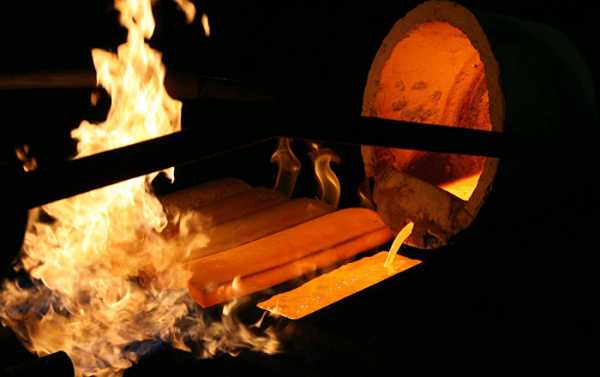
Central banks around the world are increasing their gold reserves at an incredible pace. Over the last three months alone, they have purchased gold worth 5.82 billion dollars, which is roughly a quarter more than the year earlier. It is noteworthy that the Bank of Russia and the Turkish Central Bank have broken a record in terms of gold purchases.
Gold Rush
According to data provided by the World Gold Council, central banks have bought as much as 148 metric tons of gold, which is 22 percent more than the same period last year. The Bank of Russia is leading in the purchases, which stand at 92 metric tons. Russia previously bought a comparable amount of the precious metal only at the height of the 1993 market reforms.
Taking into account the 106 tons the country purchased in the first half of the year, Russia’s gold reserve has now exceeded 2,036 tons, worth around 78 billion dollars. Russia thus entered the top five gold-holding nations, surpassed only by the US, whose reserve accounts for 8,133.5 tons, Germany with its 3369.7 tons, Italy (2,451.8 tons) and France (2,436 tons.)
If Russia continues its purchases at the same pace, it will overtake France by 2020, whereas the Central Bank seems to be set to increase its gold reserve in light of the Central Bank’s First Deputy Head Dmitry Tulin branding the asset “a 100 percent guarantee against legal and political risks.”
Meanwhile, the status as some of the most active buyers of gold has recently been claimed by Turkey and China –countries that have lately had a tense relationship with the United States. They have also become major vendors of US Treasury securities over the course of the year, with Russia having cut its investments in the US national debt to 1/8 of what it was previously.
Margin of Safety
The world is approaching a new era of instability, with the prospect of a global crisis seeming more and more tangible, and many expressing certainty that the looming upheaval will primarily affect the US economy and the dollar. In mid-October, Ulf Lindahl, the head of the company AG Bisset Associates, specializing in currency markets, stated that the value of the dollar might decrease by 40 percent with regard to the euro in the next five years.
Investors’ negative expectations are also reflected in a recent poll of 174 investment fund managers, whose total assets amount to 518 billion dollars. The poll was conducted by the Bank of America (BofA). The respondents said that over the last couple of months, they had reduced the amount of US stocks by 17 percent on average, due to the increased volatility of the country’s markets.
The aluminum and steel tariffs, as well as Chinese import limitations introduced by Donald Trump earlier this year, have already had an adverse effect on the quarterly financial statements of major American companies, 3M and Caterpillar in particular. Separately, the trade war with China has led to an upheaval for US farmers, after Beijing curbed its purchases of US agricultural produce in response to the tariffs. Prices for soy beans have since dipped by 18 percent, corn is selling at 12 percent cheaper, and pork has gone down in price by as much as 29 percent.
Dangerous Federal Reserve?
31 percent of investment fund managers consider the Federal Reserve’s policies to be the second biggest risk. “By increasing interest rates for dollar loans, the Federal Reserve simultaneously steps up the pace of the retrieval of the 3.5 trillion dollars, poured into international markets after the 2008 crunch,” chief economist at ING Bank James Knightley pointed out. “Since October, the volume of operations aimed at reducing the balance has grown to 50 billion dollars per month: the Federal Reserve will balance Treasury bonds worth 30 billion dollars, and mortgage ones worth 20 billion.”
As of the end of July, China has 1.2 trillion dollars’ worth of US national debt stocks. By dumping the stocks into the market, Beijing is believed to thereby doom the American economy to a new financial crisis, with the dollar expected to go down in price. Therefore, on the threshold of new economic upheavals, both investors and central banks are continuing to rely on good old gold.
Sourse: sputniknews.com






